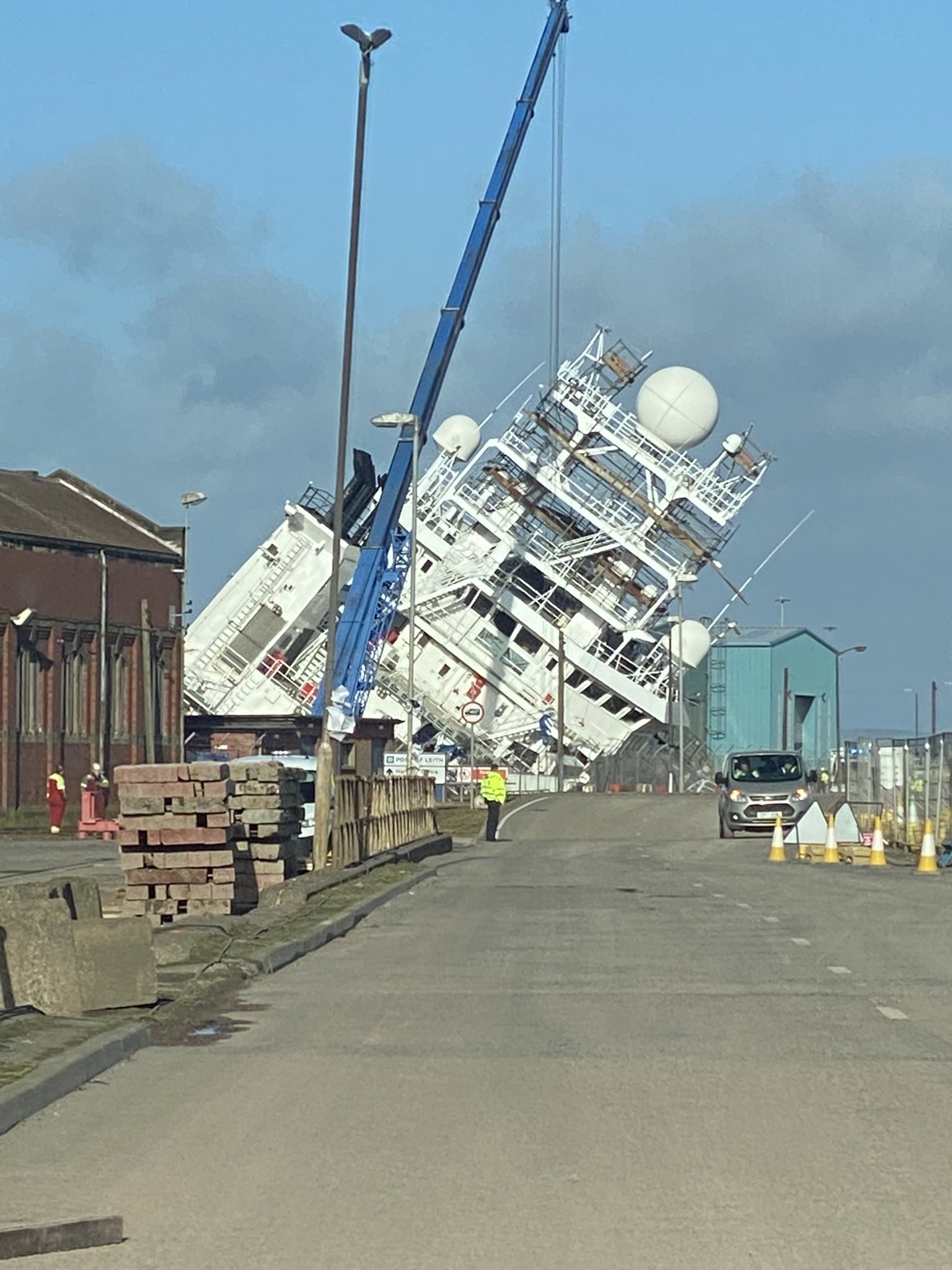
The Navy has launched its own investigation into what led a service-owned research vessel to topple over while in dry dock in Scotland.
R/V Petrel violently slipped off its supports in the dry dock and ended up on a 45 degrees list while in dry dock at Imperial Dock in Leith, Edinburgh, injuring at least 33 people, USNI News previously reported. The ship, now owned by the Navy, was used in several shipwreck research missions when it was owned by late Microsoft co-founder Paul Allen.
Naval Facilities Engineering Systems Command (NAVFAC) Engineering and Expeditionary Warfare Center is leading the investigation for the Navy, spokesperson James Stossel told USNI News.
The Navy bought the ship in September for $12.4 million, which was considered under market value, commercial shipping experts have told USNI News. The ship had previously been owned and operated by the parent company Vulcan, the oceanography research group founded by Allen, until 2020. The ship was laid up in Scotland since it was owned by Vulcan.
Petrel was in the dry dock to undergo maintenance and inspections after being purchased by the service, Stossel said.
The 250-foot ship was originally built in Norway to inspect deepwater oil infrastructure before Paul Allen bought the vessel and outfitted for its ocean exploration role.
The Navy would not outline its mission for the service when USNI News asked last year shortly after the service acquired Petrel. However, the U.K. Royal Navy is in the process of converting a similar commercial vessel into a Multi-Role Ocean Surveillance ship that will use remotely operated undersea vehicles to survey sensitive underwater cables and infrastructure. The ship is in the process of being converted to enter the Royal Fleet Auxuilry as RFA Proteus.
“Proteus will be dedicated to safeguarding critical seabed infrastructure and will act as a ‘mother ship’, operating remote and autonomous off-board systems for underwater surveillance and seabed warfare,” wrote U.K. defense site Navy Lookout.
The U.K. Ministry of Defense accelerated the acquisition due to the increased threat of Russian interference in undersea infrastructure, reported the news site.
Petrel is positioned to serve a similar role for the U.S. Navy in terms of undersea infrastructure inspection and survey.
“The Navy Facilities Command…does a lot of work below water. This vessel was earmarked to do cable protection because of dangers to underwater cables. You just saw what happened to the Nordstream pipeline and the Royal Navy just purchased some vessels for this purpose,” Sal Mercogliano, chair of Campbell University’s Department of History, Criminal Justice and Politics told U.K.’s Planet Radio.





